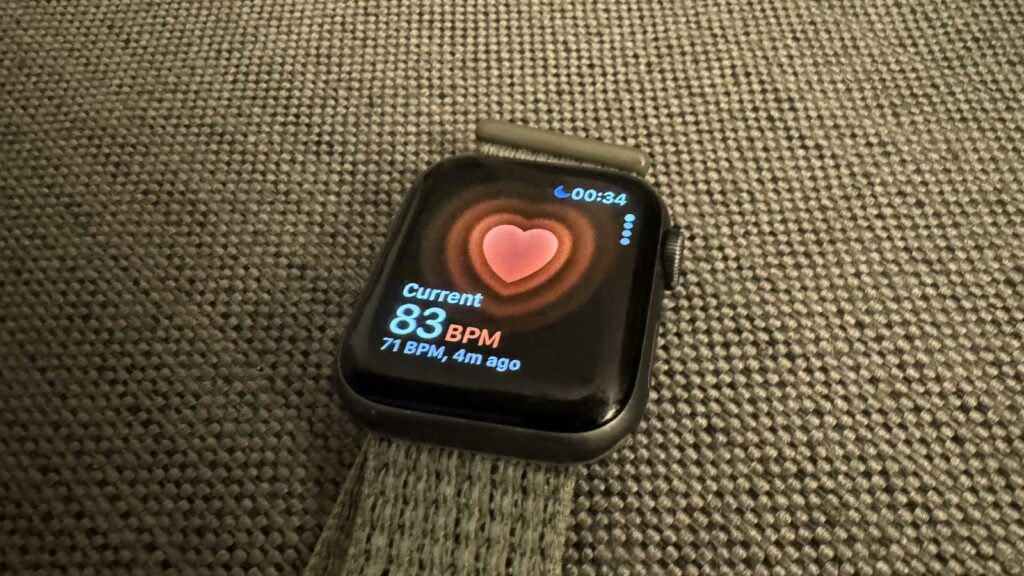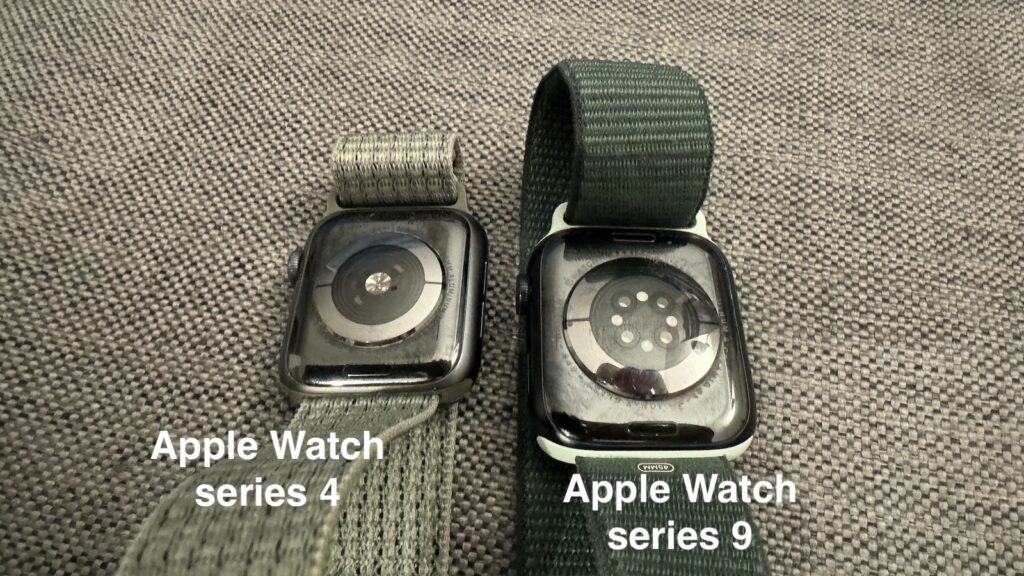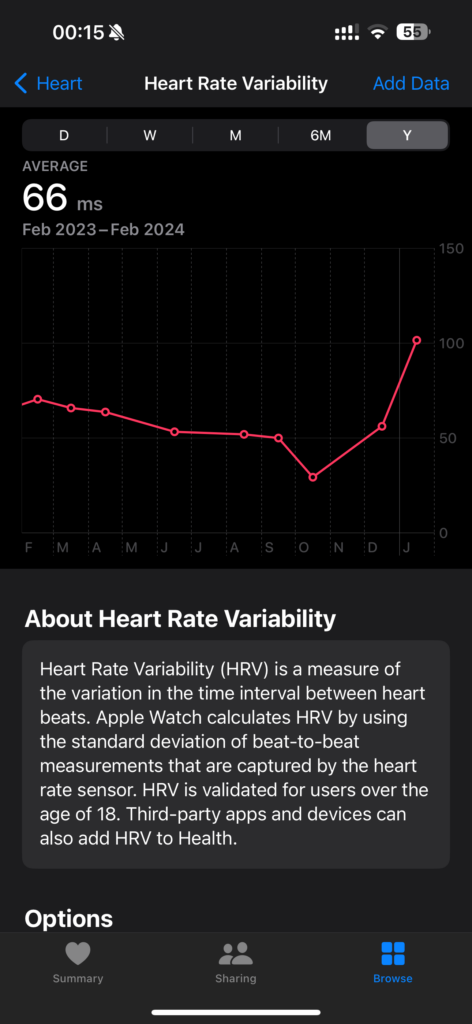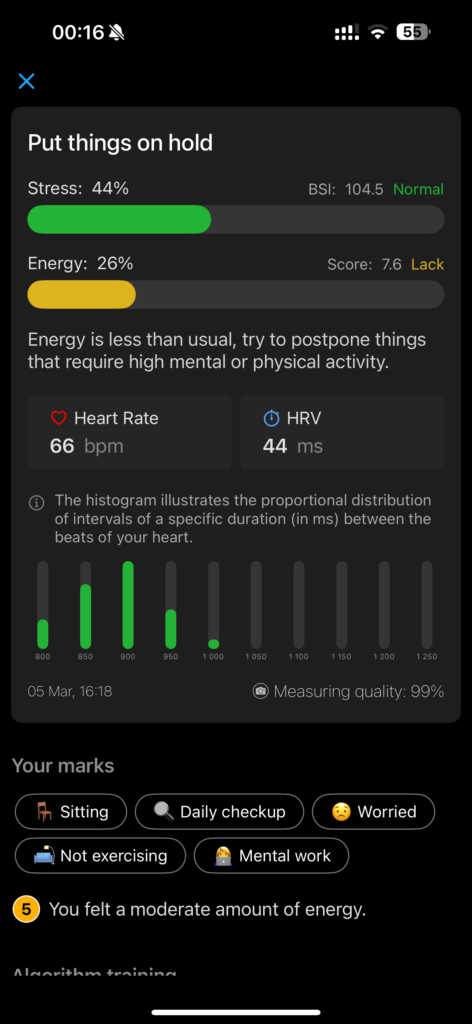Since the release of the Apple Watch on the market, these watches have been positioned as the most personal and advanced gadget for fitness. Indeed, Apple Watches gather a lot of data about you, including your heart rate variability. The watches use heart rate variability data to track your health, but at the same time, accessing HRV metrics as a user is not that simple. Apple probably does this intentionally, as it wants to keep the watches as straightforward devices as possible, and understanding the concept of HRV requires reading a couple of articles.

When and how do Apple Watches measure Heart Rate Variability?
The main feature of heart rate variability measurement is that it should be measured only in a calm state. Apple knows this well and has programmed the watch to measure heart rate variability only when the user is still, calm, and enough time has passed since the workout. These moments are not very frequent, and Apple Watch performs only a few measurements per day.
Is this good or bad? On one hand, it’s good because Apple strives to provide quality data and puts maximum effort into it. On the other hand, it’s bad because you cannot ask the watch to measure HRV forcibly (except for one workaround, which will be described below). Therefore, if you decide to measure HRV at the same time every day and know that you will be completely calm at that time (for example, after waking up), you won’t be able to do it using the watch’s standard features, but you can measure heart rate with native apple watch application.
What are the benefits of measuring and continuously monitoring HRV with Apple Watch?
Apple Watch measures only one metric – SDNN (standard deviation of intervals between heartbeats). This metric indicates your body’s ability to cope with stress. It also shows which of the nervous systems – sympathetic or parasympathetic – is more active at the moment.
Regular measurements throughout the day allow you to accurately determine your baseline SDNN level. This helps in better analyzing changes. However, relying solely on the SDNN metric provides limited information about your body.
How to take an HRV measurement using Apple Watch on demand and at the same time get more metrics?
Earlier in this article, we wrote that there is a possibility to ask the Apple Watch to take a measurement precisely at the time we need.
To do this, you need to launch the Mindfulness app in Breathe mode. In this mode, although the Apple Watch does not calculate SDNN itself, it saves data on the intervals between beats. With the help of third-party apps (for example, using our Wellhero app), you can view not only SDNN but also RMSSD, BSI, PNN, and other HRV metrics.
We described the details of such measurement in an article about how to measure stress using Apple Watch.
How accurately and reliably do Apple Watches measure HRV?
First and foremost, it’s important to remember that Apple Watch is not a medical device. If you need to know heart rate variability for diagnostic purposes, it’s better to consult medical professionals. They can provide precise and prolonged measurements using specialized medical equipment.
However, for fitness purposes, measuring through Apple Watch works perfectly fine.
Apple does not provide detailed descriptions of measurements in automatic mode, and we don’t know how much time the watch collects and analyzes data before recording the SDNN value. But when measuring through the Mindfulness app, we recommend setting the interval to 3 minutes.
We have analyzed thousands of measurements through Apple Watch and can say that they are quite accurate. Occasionally, individual intervals may duplicate or be missed. However, this happens quite rarely, and Wellhero’s algorithms detect and correct such issues during analysis. Therefore, we can confidently recommend using Apple Watch for measuring heart rate variability.
Which model of Apple Watch is best for measuring heart rate variability?
Apple Watch uses a method called photoplethysmography to measure HRV. This method involves LEDs on the back of the watch emitting green light, while a light sensor next to the LEDs detects changes in the brightness of the light reflected from the blood vessels. During a heartbeat, there is a blood surge, and since blood contains hemoglobin, which absorbs green light well, the device detects the heartbeat.

While Apple Watch constantly improves its sensors, most enhancements are primarily focused on measurements during activity, when the device is subjected to shaking, sweating, sliding on the wrist, and bright sunlight. All of these are not as necessary for HRV measurement because you still need to remain still. Therefore, any model of Apple Watch will suffice.
How can you use HRV data obtained through Apple Watch?
While Apple Watch constantly measures HRV, you probably won’t be using these results directly in the Health app. Apple’s main value proposition lies in creating an ecosystem where you can access much more information by granting access to your data to third-party apps.
For instance, compare HRV data in the Health app and the Wellhero app:


Do I need to track heart rate variability metrics?
We recommend using HRV for both sports training and overall body monitoring. It remains one of the most accessible ways to assess the state of the sympathetic and parasympathetic systems, and consequently stress.